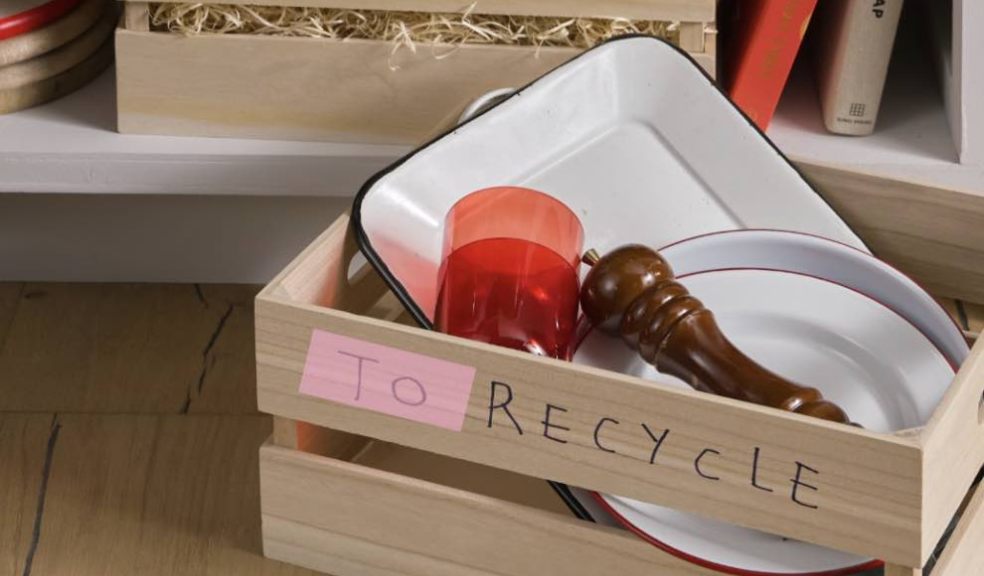
Less is more: A shift towards conscious gifting
Now that the festive season has ended, you might be left with a pile of unwanted Christmas gifts and unsure of what to do with them. You’re not alone. Each year, an estimated £42 million worth of unwanted presents are thrown away in the UK (Defra). According to research by Oxfam, 40% of us can expect to receive up to five unwanted gifts annually (Oxfam). Even more concerning, nearly a third of us hide these gifts away instead of regifting or repurposing them, while one in ten will throw them out entirely.
These figures are staggering, though perhaps not surprising in today’s culture of overconsumption. As we enter 2025, it’s clear that we must reconsider how we approach gift-giving. To help, the experts at Denby are here with their advice on how to gift more sustainably and mindfully, ensuring that your presents are not only loved but also kind to the planet.
Buy well, buy once
It can be tempting to shower loved ones with gifts, but when it comes to sustainable gifting, the principle “quality over quantity” should be your guide. Instead of purchasing cheap, mass-produced items that may break or go out of style quickly, consider higher-quality gifts that are built to last. Look for pieces made with traditional techniques, sustainable materials, and classic designs that will stand the test of time.
Ceramics, for example, are a wonderful gift option. A beautifully crafted mug, bowl, or plate can be used daily, adding value to the recipient's life while minimising environmental impact. Other examples of long-lasting gifts include a well-made leather wallet, a quality wool jumper, or a handcrafted wooden item. These items can be used and appreciated for years to come and, when cared for properly, will only get better with age.
Repurpose unwanted gifts
We’ve all received a gift that doesn’t quite suit our taste — whether it’s a piece of clothing that doesn’t fit our style or a well-meaning but misguided gag gift from an office Secret Santa. Instead of letting these items collect dust in a drawer — or worse, sending them straight to landfill — why not breathe new life into them by giving them a second purpose?
With a bit of creativity, many unwanted gifts can be transformed into something entirely new and useful. For instance, old clothing can be repurposed for crafting. A scarf or jumper that no longer suits your style might be refashioned into smaller accessories like headbands, mittens, or even knitted coasters. An unwanted vase or mug could be given a fresh coat of paint and turned into a stylish plant pot, or upcycled into a unique decorative piece for your home. The possibilities truly are endless!
Visit Denby’s reloved page for more inspiration on repurposing your old pieces.
Donate or recycle
Some items can’t be reused and should therefore be disposed of responsibly. One option is to donate them to a charity shop.
Items such as clothes, books, kitchenware, and children’s toys are often welcome at charity shops. Unopened toiletries can also be donated, not just to charity shops, but also to food banks or hygiene banks. Be sure to research local donation options to find out where your items can have the most impact.
It’s always a good idea to contact your local shops first to find out which ones are currently accepting donations. Keep in mind that many charity shops experience a surge in donations after Christmas, so if your items aren’t needed right away, you might want to hold onto them and donate when there’s a greater demand later on.
Alternatively, you could sell your unwanted items at car boot sales, jumble sales, or on online platforms like eBay and Vinted. This way, you can make some extra income or donate the proceeds to a cause of your choice.
Some items won’t be suitable for donation, but you might be surprised at how many things can be recycled. Books, electrical items, clothing, fabrics, shoes, and bags are all recyclable. To find out what recycling facilities are available in your local area, visit the Recycle Now website.
Shop secondhand
One of the simplest ways to make gift-giving more sustainable is to choose vintage or secondhand items. Not only does this help keep products out of landfills, but it also reduces demand for new goods, conserving valuable energy and resources. Moreover, secondhand gifts are often one of a kind, coming with plenty of character and history to make them even more special for the receiver.
You can find vintage treasures in your local antique shops, charity shops and secondhand markets, or shop online through platforms like Etsy and eBay. You may even get lucky and find pieces from your favourite brands for less than you would pay for new.
Low-impact gifting
Sometimes the most thoughtful gift isn’t a physical item, but an experience or quality time spent together. You could gift tickets to a concert, a cooking class, or a weekend getaway – something that speaks to your loved one’s passions and interests.
If you're struggling to buy for someone who seems to have everything, a gift voucher for their favourite store or online platform can be the perfect solution. By allowing the recipient to choose exactly what they need or want, you eliminate the risk of giving them something they won’t use.
Another fantastic low-impact option is crafting your own gifts. A handmade item, whether a hand-knitted scarf, a custom painting, or a homemade jar of jam, can be incredibly special. The time and effort you put into creating a gift adds a personal touch that can’t be bought in a store.

















